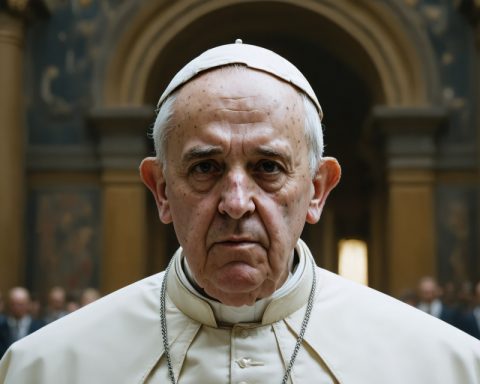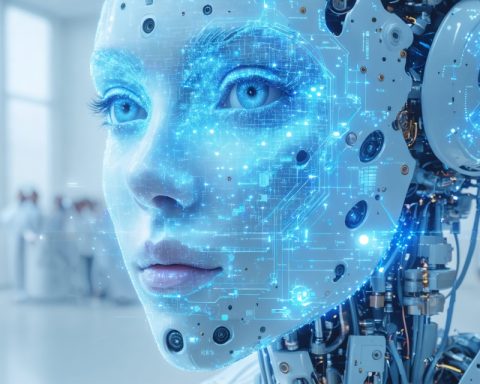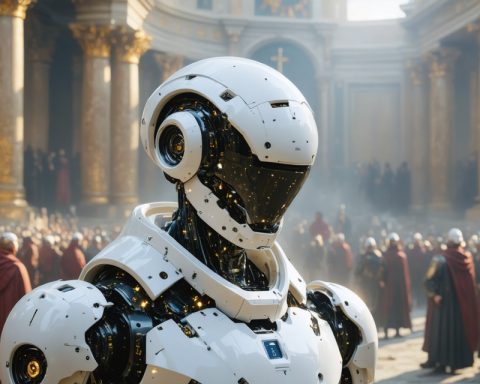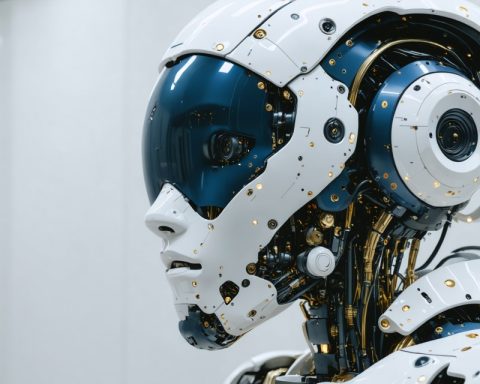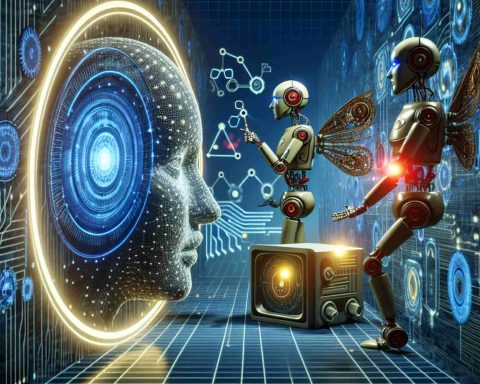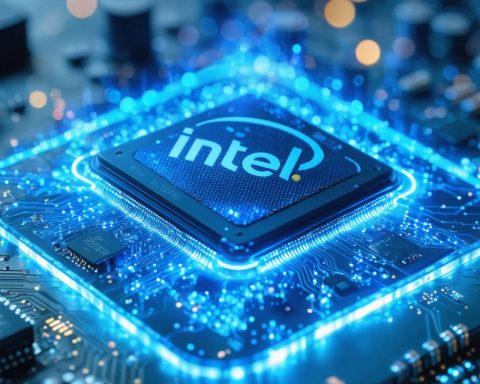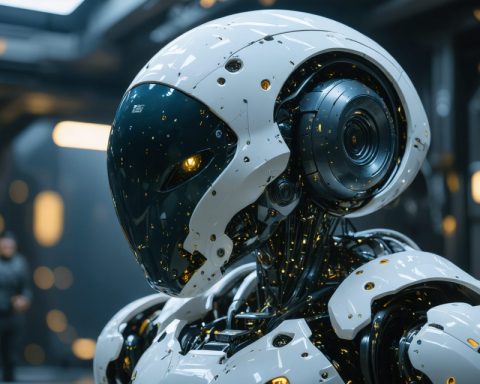- Pope Leo XIV’s vision integrates tradition and the future, focusing on Artificial Intelligence (AI) as a transformative force.
- The choice of his papal name honors Pope Leo XIII, connecting past industrial challenges to today’s digital revolution.
- Pope Leo XIV calls for the Church to address the ethical and moral implications of AI, drawing parallels to historic social teachings.
- The Vatican is increasingly engaged with AI, reflecting on its potential and ethical concerns as outlined in recent documents.
- This new papal direction is not merely acknowledgment but a proactive engagement with AI’s role in shaping the future.
- Leo XIV emphasizes the intertwining of human and divine insight to ensure technology enhances, rather than diminishes, humanity.
As dawn broke over Vatican City, a new era unfolded not with a quiet whisper but with an emphatic declaration that sent ripples through the Holy See and beyond. In his inaugural address to the College of Cardinals, Pope Leo XIV, with a discerning gaze and a voice that cut through the expectant silence, unveiled a vision deeply rooted in tradition yet audaciously embracing the future. At the heart of this vision was a surprising muse—a nascent force as transformative as it is intangible: Artificial Intelligence (AI).
The choice of his papal name, a decision steeped in ceremony and significance, was, at first glance, a homage to Pope Leo XIII. This revered predecessor had deftly navigated the Catholic Church through the tumultuous dawn of the First Industrial Revolution. Yet, Pope Leo XIV revealed that his choice also bore the indelible mark of the digital age. His name is a testament to the unfolding “second industrial revolution,” driven not by steam or steel, but by bytes and algorithms.
Standing before the crimson-clad assembly, his words carried a resonance that transcended the walls of the Apostolic Palace. He drew a vivid parallel to Rerum Novarum, Pope Leo XIII’s pivotal encyclical on the social issues birthed by industrialization. In today’s era, he argued, humanity faces a new challenge—a technological deluge that relentlessly tests the boundaries of human dignity, justice, and labor.
The Catholic Church, once seen as a bastion of tradition, is now increasingly engaging with AI’s burgeoning influence. Earlier this year, the Vatican issued a significant document that delves into the ethical dimensions and limitations of AI, reflecting a growing acknowledgment of its potential and perils. Pope Francis, Leo XIV’s predecessor, regularly cautioned against AI’s capacity to spread misinformation, highlighting a spectrum of ethical concerns.
Yet, by weaving AI directly into the fabric of his papal identity, Pope Leo XIV signaled a definitive and bold orientation for his papacy. This isn’t a fleeting curiosity or a mere acknowledgment of technological trends. It is a clarion call for the Church to deliberate and devise teachings that meet the moral quandaries posed by this technological tidal wave.
As Pope Leo XIV gazes across the digital landscape, he invites the Church to anchor itself in its rich heritage while courageously charting a course through the uncertain waters of innovation. This pivot promises not just a response to AI’s advancements, but a proactive engagement with the tools shaping humanity’s future. In this moment, the Vatican underscores its role as both a guardian of tradition and an unflinching navigator of the unknown, urging the faithful and the skeptical alike to ponder what it means to be human amidst machines that learn and adapt.
In this confluence of faith and technology, Leo XIV crafts a narrative that rests on a powerful premise: that the threads of human insight and divine guidance must interweave to craft a future where technology elevates, not diminishes, the human spirit.
The Pope’s Bold Embrace of AI: Navigating Faith and Technology in a New Era
Introduction: The Vatican’s Technological Awakening
Pope Leo XIV’s recent inaugural address marks a pivotal moment in the Catholic Church’s approach to modern challenges. By integrating Artificial Intelligence (AI) into his vision, the Pope signals a transformative era where tradition and innovation coalesce. His decision to name himself after Pope Leo XIII underscores a bridge between past industrial revolutions and today’s digital paradigm shift.
AI and the Vatican: Ethical and Social Considerations
The Vatican’s engagement with AI is not limited to acknowledgment but extends to deep ethical considerations. Earlier this year, a Vatican document addressed the limitations and moral implications of AI, emphasizing accountability, transparency, and the safeguarding of human dignity. Such efforts showcase a commitment to steering the ethical discourse around a technology that profoundly impacts society.
Pressing Questions:
– How can AI be ethically integrated into religious practices? The Church aims to define guidelines that align technological advancements with Christian ethics, ensuring AI serves humanity positively.
– What role does AI play in modernizing the Church? Beyond theological discourse, AI can improve administrative functions, outreach, and data management, making the Church more accessible and efficient.
How-To Steps for AI Integration in Religious Contexts
1. Assess AI’s Role: Understand AI’s potential applications within the Church, such as enhancing community engagement or educational efforts.
2. Develop Ethical Guidelines: Draw upon Catholic social teaching to establish principles guiding AI use that promote justice and human rights.
3. Educate Clergy and Congregation: Provide resources and training to ensure a well-informed community ready to engage with AI responsibly.
Real-World Use Cases: AI in Religious Institutions
Faith-based organizations globally are exploring AI in various ways—automating routine tasks, analyzing data for insights on congregation engagement, and even using AI-driven platforms for spiritual guidance.
Market Forecasts & Industry Trends
The AI industry is experiencing exponential growth, with the global AI market expected to reach $733 billion by 2027, according to Fortune Business Insights. As religious institutions tap into this burgeoning field, they stand to harness its potential benefits while navigating ethical complexities.
Controversies & Limitations
While AI can enhance efficiency and outreach, its use in religious contexts raises concerns about depersonalization, surveillance, and the erosion of human agency. The Church must address these issues transparently and work towards AI that complements human interaction rather than replacing it.
Insights & Predictions
Pope Leo XIV’s papacy could spearhead a global dialogue on AI, inspiring other faith traditions to consider their responses to technological advancement. As the Church evolves, it will likely serve as a model for integrating AI while maintaining core spiritual values.
Conclusions: Actionable Recommendations for the Faithful
– Stay Informed: Keep abreast of AI developments within the Church and broader society to engage thoughtfully and critically.
– Participate in Dialogue: Encourage conversations within your community about the implications of AI, fostering a collective approach to ethical challenges.
– Embrace Balance: Aim to harness AI for spiritual and administrative enrichment while prioritizing personal connections and discernment.
For more on how technology is shaping various facets of society, visit the Vatican official site for up-to-date insights and teachings.

